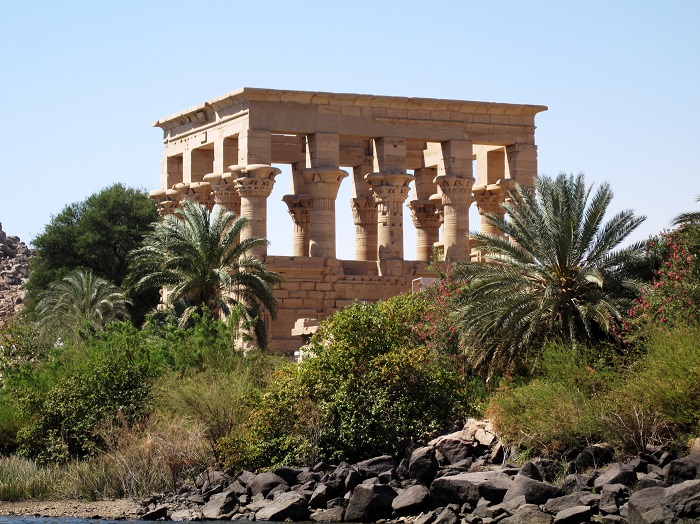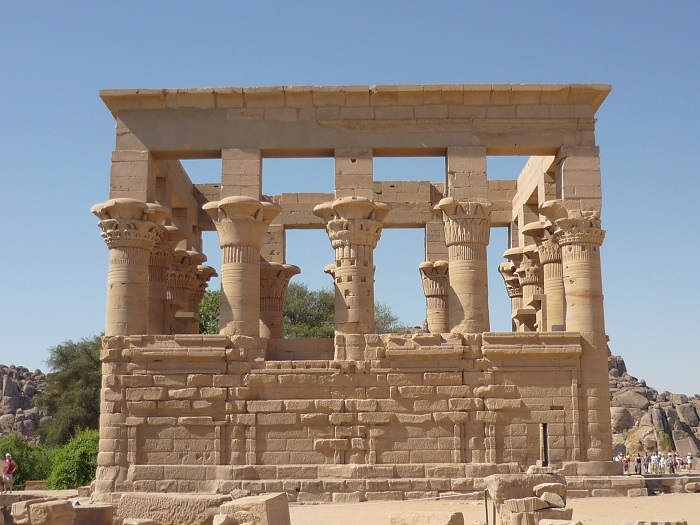Trajan’s Kiosk, referred to by the locals as Pharaoh’s Bed, is a historic hypaethral temple that is located on Agilkia Island, in the reservoir of the Old Aswan Dam along the Nile River within the southern part of the Arab Republic of Egypt.
Even though it is still unfinished, it was attributed to the Roman Emperor Trajan that ruled the Roman Empire from 98 to 117 and was remembered as a successful soldier-emperor who presided over one of the greatest military expansions in Roman history and led the empire to attain its greatest territorial extent by the time of his death.

Even though some details on the temple point to the temple being built before the reign of Emperor Trajan, he is still depicted as a Pharaoh on some of the interior reliefs.
The interesting temple was built on the island of Philae, near the lower Aswan Dam, and served as the main entrance to the Philae Island Temple Complex from the River Nile, however, as the Aswan High Dam was built on the river, to protect this very important temple, it was relocated to its present location as part of the International Campaign to Save the Monuments of Nubia.
The temple itself consists of a rectangular room that is surrounded by 14 flowering columns with small walls that were built between the columns to include inscriptions and decorations, which sadly were not completed by their original builders. The temple is 15 by 20 m (49 by 66 ft) in width and length, and 15.85 m (52 ft) high.
Although the temple is roofless, some sockets in the structure suggest that there was a roof in the past, possibly made of timber, and with its entire structure, it has become a symbol of all the Philae temples.
Still, there are three entrances from where people can enter the structure, and as we see it today, it represents one of the finest examples of the unusual combination of wood and stone as an architectural style for an Egyptian temple.

The proof of the dedication to Emperor Trajan can be found in the interior part of the temple, where the important emperor figure is shown as he is burning incense before the Gods Osiris and Isis.
In conclusion, the ongoing efforts to preserve the historic and significant temple on Agilkia Island have proven fortunate, as it was saved from the rising waters of the Nile, and this stunning example of ancient Egyptian architecture is sure to inspire visitors to come and experience it in person.









